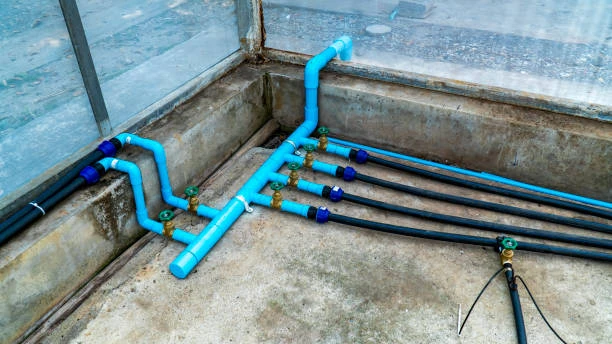The plastic pipe fittings market is undergoing significant transformations as it adapts to global demands, technological advancements, and environmental considerations. This report delves into the current state of the plastic pipe fitting market, projections for 2024, and the key factors driving its growth.
Overview of the Plastic Pipe Fitting Market
Plastic pipe fittings serve essential roles in various applications, including plumbing, irrigation, and industrial processes. Manufacturers mainly produce these fittings from materials like PVC (Polyvinyl Chloride), HDPE (High-Density Polyethylene), and PEX (Cross-Linked Polyethylene) for their durability and versatility.
Key Benefits of Plastic Pipe Fitting:
- Durability: Resistant to corrosion, plastic fittings have a longer lifespan compared to traditional materials.
- Cost-Effectiveness: Generally more affordable than metal fittings, leading to lower installation and maintenance costs.
- Ease of Installation: Lightweight and flexible, making them easier to handle and install.
Current Trends in the Market
1. Growing Demand for Infrastructure Development
As governments worldwide invest in infrastructure development, the demand for plastic pipe fitting is expected to rise. These fittings are crucial for efficient water supply systems, sewage management, and gas distribution networks.
2. Increased Focus on Sustainability
The global shift towards sustainable practices is impacting the plastic pipe fitting market. Many manufacturers are now producing fittings from recycled materials, reducing the environmental footprint associated with traditional plastic production.
3. Technological Innovations
Advancements in manufacturing technology are leading to the creation of high-performance plastic fittings. Innovations such as enhanced pressure resistance and UV stabilization are becoming standard features, making these products more reliable and durable.
Regional Insights
1. North America
The North American market for plastic pipe fitting is expected to grow steadily, driven by aging infrastructure and the need for replacements. Government initiatives to modernize water supply systems further support market expansion.
2. Europe
In Europe, stringent regulations regarding water quality and environmental impact are boosting the demand for plastic pipe fitting. The region’s commitment to sustainability aligns with the benefits offered by plastic materials.
3. Asia-Pacific
The Asia-Pacific region is projected to witness the fastest growth in the plastic pipe fitting market. Rapid urbanization, population growth, and significant investments in infrastructure projects are driving demand in countries like India and China.
Challenges in the Market
1. Regulatory Compliance
The plastic pipe fitting market faces challenges related to varying regulations across different regions. Compliance with safety and environmental standards can complicate market entry for manufacturers.
2. Competition from Alternative Materials
Plastic fittings face competition from metal and concrete alternatives. Manufacturers must continuously innovate to differentiate their products and capture market share.
3. Environmental Concerns
While plastic pipe fitting offer numerous benefits, concerns about plastic waste and recyclability continue to challenge the market. Addressing these issues is crucial for gaining consumer trust and ensuring long-term growth.

Future Outlook for 2024
The plastic pipe fitting market is poised for substantial growth in 2024, influenced by several key factors:
1. Increased Investment in Water Infrastructure
As global water scarcity becomes a pressing issue, investments in water infrastructure are expected to rise. Plastic pipe fitting will play a vital role in enhancing water management systems.
2. Advancements in Recycling Technologies
Improvements in recycling technologies will enable manufacturers to produce fittings from recycled materials, further reducing environmental impact. This shift is likely to resonate with environmentally conscious consumers and businesses.
3. Rising Demand for Smart Water Management Systems
The integration of smart technologies in water management is gaining momentum. Plastic pipe fitting that accommodate smart sensors and monitoring systems will be in high demand, driving innovation in the market.
Conclusion
The global plastic pipe fittings market will see significant growth by 2024. This growth will stem from infrastructure development, sustainability initiatives, and technological advancements in the industry. As stakeholders navigate this evolving landscape, understanding market trends and addressing challenges will be key to success.
FAQs
1. What materials are commonly used for plastic pipe fittings?
Manufacturers primarily make plastic pipe fittings from PVC, HDPE, and PEX. Each material offers unique benefits that cater to various applications in construction and plumbing.
2. Why are plastic pipe fitting preferred over metal fittings?
Plastic fittings are lightweight, resistant to corrosion, cost-effective, and easier to install compared to metal alternatives.
3. How does sustainability impact the plastic pipe fitting market?
There is a growing focus on sustainability, leading manufacturers to produce fittings from recycled materials, thus reducing environmental impact.
4. What regions are expected to see the highest growth in this market?
The Asia-Pacific region is set to experience the fastest growth in the market. Urbanization and significant investments in infrastructure will drive this rapid expansion.
5. What are the challenges facing the plastic pipe fittings market?
Challenges include regulatory compliance, competition from alternative materials, and environmental concerns regarding plastic waste.
Feel free to reach out if you have any more questions or need further insights!


















